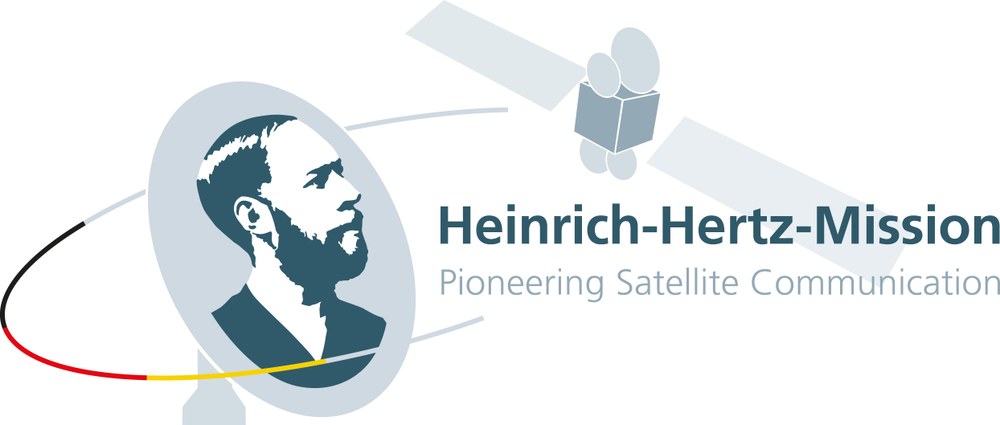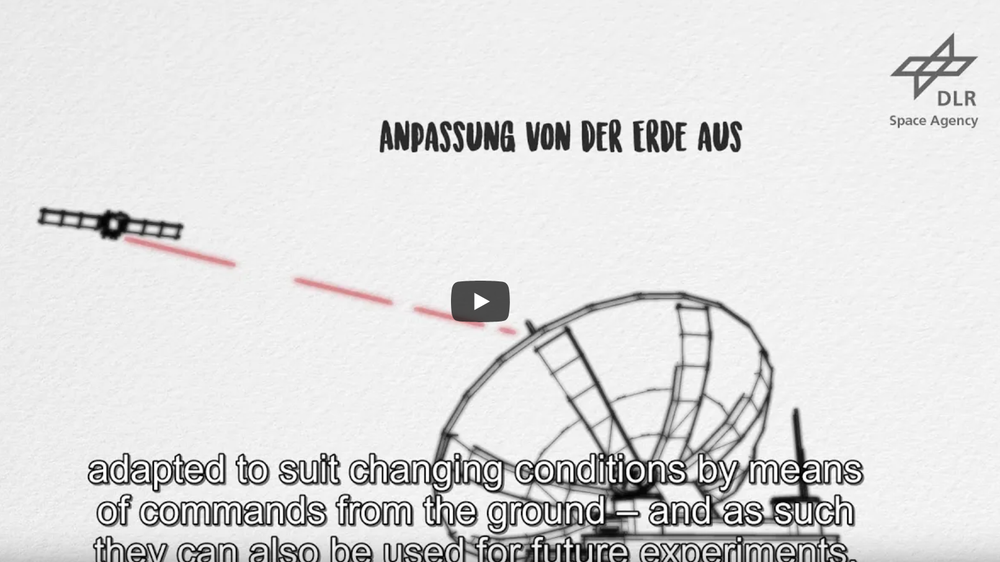Heinrich Hertz

Approximately 20 experiments related to communications, antenna and satellite technology are also being carried out on board the Heinrich Hertz satellite. The experiments were devised and implemented by scientific institutes and industrial companies for the purpose of testing new communications services.
The Heinrich Hertz mission is also intended to maintain and expand Germany’s system capability in this area - the ability of German industry to independently design, build and launch communications satellite systems and platforms.

Video: Heinrich-Hertz communications satellite (animation)
Your consent to the storage of data ('cookies') is required for the playback of this video on Youtube.com. You can view and change your current data storage settings at any time under privacy.
A minivan in space
Following its launch, the satellite will enter a geostationary orbit „ it will always be located above the same spot on Earth’s surface, at an altitude of approximately 36,000 kilometres „ and remain there for 15 years. Heinrich Hertz is the first German communications satellite for more than 20 years, following the end of the DFS Kopernikus German communications satellite mission in 2002. Heinrich Hertz is a small geostationary satellite (SGEO or SmallGEO) with dimensions similar to those of a minivan.
SGEO
SGEO, or SmallGEO, is a platform for compact geostationary communications satellites. Thanks to its modular system, it is very flexible and can be adapted to the various requirements of satellite operators quickly and inexpensively. This development was made possible by a public-private partnership, with funding supplied by the European Space Agency (ESA) and an industrial consortium led by OHB-System AG in Bremen handling the implementation.
The satellite’s payload represents a new conceptual approach to satellite communications. Normally, a communications satellite would only carry technology for receiving, forwarding and sending information. This is known as a transparent payload. Heinrich Hertz is also equipped with small computer processors which can process information on board the satellite itself. This is referred to as a regenerative payload. These powerful processors enable teams on Earth to reconfigure the satellite during operation, making it extremely flexible. Over Heinrich Hertz’s considerable 15-year lifespan, the satellite’s capabilities will be continuously adapted to meet changing technical requirements.
In addition to the scientific and technical aspects of the mission, the Federal Ministry of Defence (BMVg) intends to use the extra payload capacity of the Heinrich Hertz satellite for its own communication purposes in collaboration with the Federal Ministry for Economic Affairs and Climate Action (BMWK). The BMVg payload is designed to work independently of the rest of the payload and only shares common basic functionalities with the satellite such as the energy supply or attitude control of the satellite.
Heinrich Rudolf Hertz
The communications satellite was named after German physicist Heinrich Rudolf Hertz. Born on 22 February 1857 in Hamburg, Hertz primarily focused on research into electromagnetic waves. In 1886, he succeeded in transmitting electromagnetic waves from a transmitter to a receiver in open space for the first time. In doing so, he laid the foundation for modern communications and media technology. Due to his pioneering research, the unit of frequency was named after him - one Hertz represents one oscillation per second.
Aiding transmission for other satellites
Heinrich Hertz will also offer its services as a relay station for smaller Earth-orbiting satellites up to 800 kilograms in mass. Normally, satellites orbiting Earth can only send their data to a ground station when they come within radio range. The period in which they can do this lasts only approximately ten to 15 minutes. The satellite must then orbit Earth again before it can resume sending data to the ground. Heinrich Hertz can act as a relay station, receiving data from other satellites within its radio range and forwarding it on to the ground station. This extends contact times to approximately 40 minutes, significantly increasing the amount of data that can be sent per cycle.
One of the satellite’s special features is its propulsion technology: Heinrich Hertz will not be equipped with standard chemical propulsion, but with a chemical-electric propulsion system. This innovative combination reduces the required mass of the propulsion system, thus increasing the payload capacity for technologies and experiments. Heinrich Hertz is financed by the German Space Agency at DLR with funding from the Federal Ministry for Economic Affairs and Climate Action (BMWK) and with input from the Federal Ministry of Defence (BMVg).

